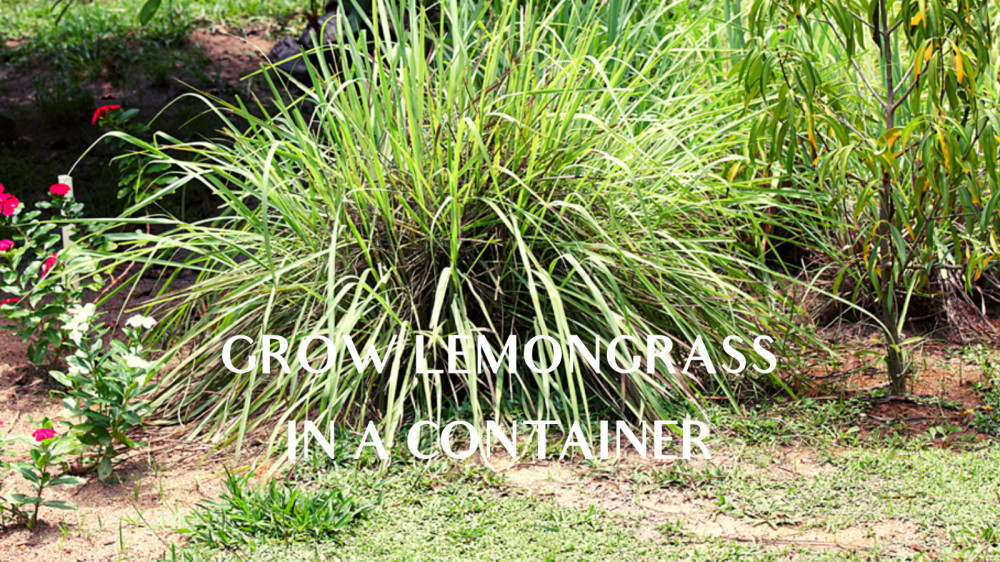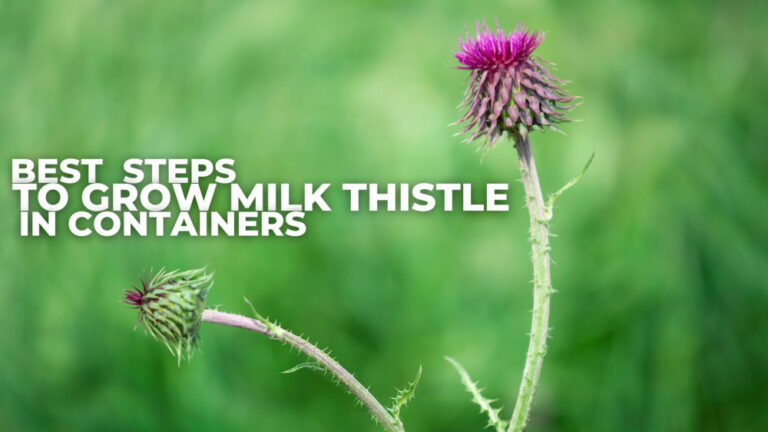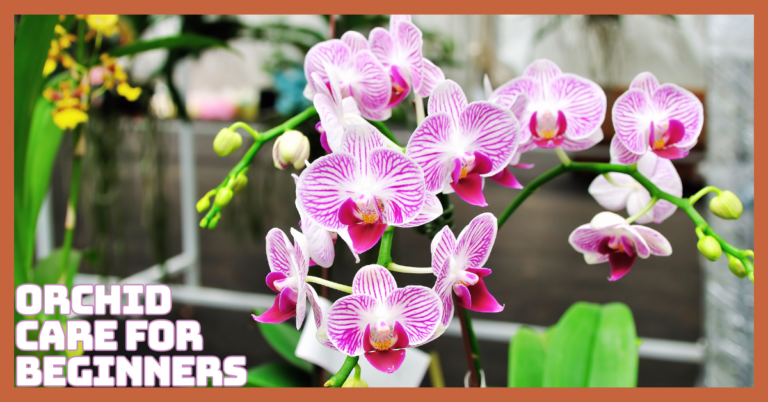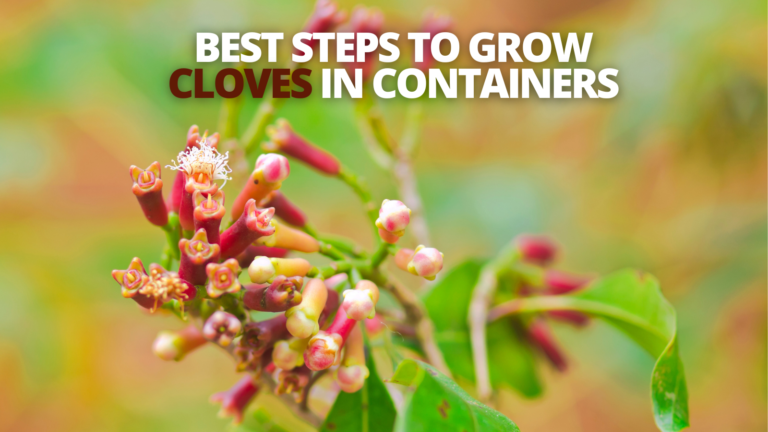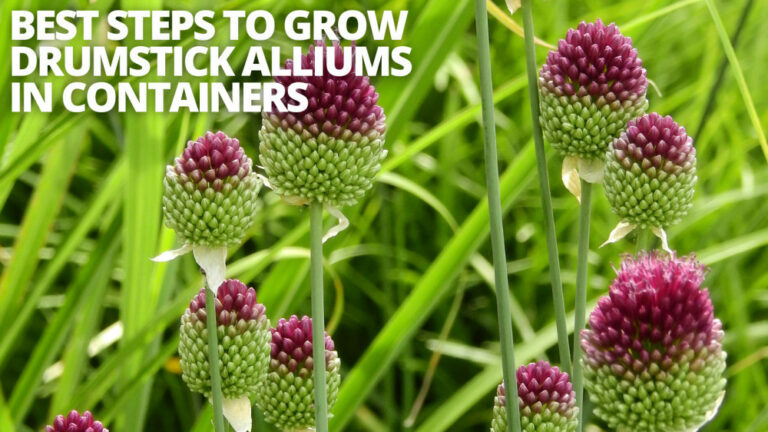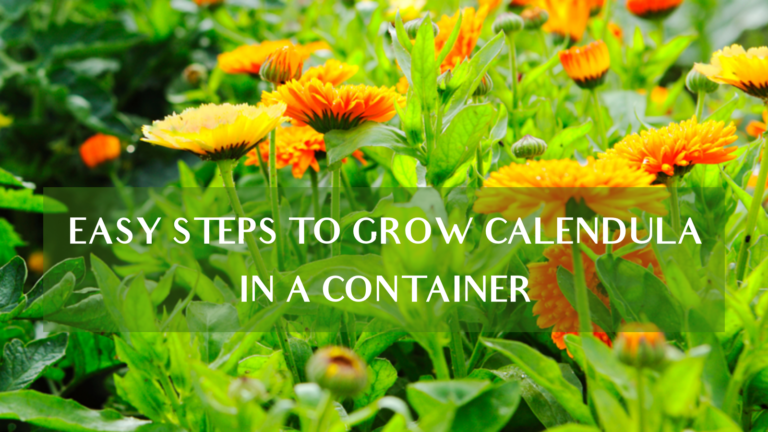Easy Steps To Grow Lemongrass In A Container
Easy Steps To Grow Lemongrass In A Container
The tall, perennial grass known as lemongrass (Cymbopogon citratus) is one of about 45 species indigenous to Asia, Australia, and Africa's tropical and subtropical climates.
Lemongrass is grown in India, which produces more than 2 million pounds of it annually. It is grown along the Western Ghats mountain range and near the foothills of Arunachal Pradesh and Sikkim in the Himalayas.
I hope this blog will be helpful to you if you would like to grow lemongrass in a container.
History & Origin Of Lemongrass
Cymbopogon, a genus of Asian, African, Australian, and tropical island plants in the grass family, is also known as lemongrass, barbed wire grass, silky heads, Cochin grass, Malabar grass, oily heads, citronella grass, or fever grass.
Several species, most notably Cymbopogon citratus, are frequently grown as culinary and therapeutic herbs due to their aroma, similar to lemons (Citrus limon).
The Greek words kymbe ((κύμβη, “boat”) and pogon (πώγων, “beard”) are the origins of the term “cymbopogon,” which “means in most species, the hairy spikelets project from boat-shaped spathes.” Both lemongrass and its oil are said to have medicinal qualities.
Herbalists claim lemongrass—which should not be confused with lemon balm, an utterly different herb—has several beneficial qualities, including antibacterial, antifungal, and fever-reducing benefits.
Animal experiments and lab tests have proven some of these claims true. One test-tube study, reported in the medical journal Microbios in 1996, showed that lemongrass was effective against 12 species of fungi and 22 strains.
Additionally, the analgesic and sedative properties of the herb have been supported by scientific studies.
According to a rodent study, Myrcene, a substance present in the essential oil of Cymbopogon citratus, may have a site-specific analgesic effect.
Myrcene appears to function only in certain locations, in contrast to aspirin and comparable analgesics, which tend to reduce pain across the body. According to a human study, lemongrass may also impact how the body deals with cholesterol.
Citronella grass (Cymbopogon nardus and Cymbopogon winterianus) has magenta base stems and reaches a height of about 2 meters (6+12 feet).
These species make citronella oil, which is used in soaps, candles, insect sprays, and aromatherapy. It is particularly effective at keeping mosquitoes and houseflies away.
Geraniol and citronellol, two of citronella's main chemical components, are antiseptics, which explains why they are used in home cleaners and soaps.
Types Of Lemongrass
There are more than 50 species of grasses of the Cymbopogon, or lemongrass, a genus indigenous to tropical Asia and southern India.
The most popular cultivar is decorative lemongrass (Cymbopogon citratus), a critical ingredient in Thai, Vietnamese, and Cambodian dishes.
The plant gives soups, curries, teas, and other beverages a lemony scent and flavour. Lemongrass oil is also used in cooking and is utilized in aromatherapy, Ayurveda, cosmetics, and perfumery.
Other members of the lemongrass family are also cultivable. Ideally, you should know the best varieties to grow lemongrass in a container.
1. Ornamental Lemongrass
Ornamental lemongrass, also known as oil grass and West Indian lemongrass, is a perennial evergreen that grows best in USDA plant hardiness zones 10 through 11.
The plant may be dormant during intense cold and restart growth the next season because the roots are frequently hardy to USDA zone 8.
Lemongrass grows in thick clumps that can grow up to 6 feet tall and 3 feet wide, producing long, arching, light green stems.
The plant does well in full sun and loamy, well-draining soil; however, it will tolerate moderate shade and isn't picky about soil type. Divide clumps in the spring and summer to encourage growth.
2. Citronella Lemongrass (Cymbopogon nardus)
Citronella (Cymbopogon nardus), sometimes referred to as nard grass and mana grass, is a species of lemongrass used to make citronella oil.
Although it also serves as a flavouring ingredient and is used in creating cosmetics and perfumes, most people are familiar with this oil as an insect repellant.
In USDA zones 10 through 12, citronella is a perennial, but it is not always guaranteed to endure wet winters.
The success rate increases when clumps are divided and replanted in the late summer or early fall, especially if some divisions are kept indoors until the following spring.
3. Java Citronella Lemongrass
Cymbopogon winterianus, often known as Java citronella, is a native of Indonesia's Java Island.
This particular variety of lemongrass also forms tall, arched leaf stems coloured yellow or reddish-purple and grows in compact, thick bunches.
The plant thrives on sandy loam soil with adequate drainage, a pH of 5.8 to 8.0, and plenty of sunlight and moisture.
Like many lemongrass species, viable seeds are challenging to find. Therefore, clump division is the most effective propagation method.
In USDA zones 9a through 11, the plant is a perennial, although in colder climates, it is planted as an annual.
4. East Indian Lemongrass (Cymbopogon flexuosus)
East Indian lemongrass (Cymbopogon flexuosus), commonly called Malabar grass, has a lemony flavour and scent with warm, gingery undertones.
This perennial species thrives in full sun, extreme heat, and organically rich, well-draining loam soil in USDA zones 9 through 11.
Although East Indian lemongrass requires ample garden space, it can also be grown as an annual plant in large containers in milder climates.
This type makes eye-catching border or hedge plants because it bears tall, purple seed heads. East Indian lemongrass is also cultivated along embankments to help stop soil erosion.
Tips To Grow Lemongrass In A Container
Herbs like lemongrass are simple to grow. It spreads swiftly and may quickly fill up any container or garden area of any size.
Although you may readily grow lemongrass in cooler climates, it thrives in tropical to mild temperate zones.
1. Choose The Right Container To Grow Lemongrass
The best size for growing lemongrass is a 5-gallon (22 litres) or larger pot with a minimum diameter of 14 inches (35 cm).
Since lemongrass roots spread quickly, you should use a larger container, as they could burst out of a smaller one.
Naturally, you might start your Lemongrass plant in a smaller container and move it to a larger one as it develops and spreads.
The Lemongrass plant will thrive when divided and replanted, but a massive 5-gallon pot is not the best choice for growing it on your kitchen window ledge.
You may grow lemongrass in any container with moist, rich, well-drained soil.
When picking any container to grow lemongrass in, remember to abide by these fundamental guidelines:
- The pot should be the appropriate size for the desired number of plants to grow. One size is smaller for young, developing plants and larger for mature plants.
- Every pot must have adequate drainage.
- Any style or hue will work. Lemongrass is easygoing.
You might try growing your lemongrass and herbs in a garden tower if you don't have many open areas.
This method allows you to grow several herb plants in a small area, either indoors or outdoors.
So, before repotting your Lemongrass, you can grow it in smaller pots indoors and enjoy the plant's fragrant scent and insect-repelling qualities.
2. Location To Grow Lemongrass In A Container
Despite having a light, lemony aroma, lemongrass is extremely durable and simple to grow—as long as it is cultivated at the proper temperature.
It thrives in warm, sunny environments because it is native to warm tropical regions. While you can keep lemongrass indoors all year long,
EasytoGrowBulbs notes that for maximum growth and development, lemongrass has to be let to grow outdoors in full sun for at least eight hours each day.
If you must keep your lemongrass indoors, occasionally allowing it to spend a few hours in the sun will improve its flavour and vitality.
3. Soil To Grow Lemongrass In A Container
Each lemongrass stalk should be planted in a container with suitable potting soil, with roots about an inch below the soil's surface.
Lemongrass requires nutrient-rich, well-drained soil and mild to moderate watering; avoid letting water collect around the plant.
Lemongrass thrives in warmer climates, so plant it with direct sunlight, fertile, well-drained soil, and a pH range of 6.5 to 7.0. Plants should be 24 inches apart.
Mix several inches of aged compost or rich organic matter into your native soil to start the growing season.
Lemongrass thrives on loamy, rich soil. When planting, amend the soil with compost, manure, and leaf mould. When potting a Lemongrass plant, always use commercial potting soil.
Refill the soil annually if the plant is kept in the same container for several years. Alternatively, you can report the plant every spring into a new pot with new soil if you want a healthier plant.
Occasionally, manure tea can be added to the soil to supply essential trace nutrients and give the plant an extra push. Lemongrass thrives in Zones 8 through 11.
4. Sun Or Shade
Lemongrass grows best in full sun; therefore, to meet the plant's energy requirements, ensure each plant gets at least six hours of direct sunshine daily.
If your plant struggles to develop in the shade, take it into the sun and watch it flourish! Rich loamy soil, various-sized pots, and enough water to sufficiently hydrate the soil are necessary for growing lemongrass in containers.
Six hours of direct sunlight each day and routine upkeep, fertilizing, and harvesting will keep the plants thriving at their best.
If you reside in a warmer, more tropical area, lemongrass might also thrive if you position it in partial shade. Lemongrass loves the full sun. The soil must be particularly well-draining for lemongrass.
5. Watering To Grow Lemongrass In A Container
Keep the soil around the lemongrass moist for optimum plant growth, especially after transplanting it into a new container.
When the plant is fully grown, it can withstand drought. A 3-inch (7-cm) layer of mulch on the soil will retain moisture and improve it as it decomposes.
Each plant should only be watered in the morning or evening. Never water the plant's stalks or leaves; instead, water the surrounding soil.
Water lemongrass when the top inch of soil is dry or if it is in a garden every few days. In the spring and summer, lemongrass planted in pots usually needs more frequent watering every one to two days.
Lemongrass needs regular rainfall and humid conditions; thus, watering should be considered. Provide mist and water in arid areas at least twice every week.
In temperate areas with abundant rainfall, insert a finger up to the first knuckle into the soil surrounding the plant's roots.
The most evident cause of a browning lemongrass plant would be a lack of nutrients and/or water.
Since lemongrass is native to damp, frequently rained-on regions, it may require more water in the home garden than other plants. Regularly spray and water the plants.
6. Planting And Caring Of Lemongrass Plants
Each lemongrass stalk should be planted in a container with suitable potting soil, with roots about an inch below the soil's surface.
Lemongrass requires nutrient-rich, well-drained soil and mild to moderate watering; avoid letting water collect around the plant.
A balanced fertilizer, such as a 15-15-15 product, provides lemongrass with a weekly summer nitrogen boost.
When transplanting, you can also improve the soil by putting a little fertilizer or soil supplement in the planting hole.
If you intend to use your lemongrass in cooking, be careful about the plant food or fertilizers you feed it.
Using organic fertilizers can help with this. Lemongrass can survive and overwinter outdoors in USDA Plant Hardiness Zones 9b to 11.
Bring your lemongrass plant indoors if you live in a colder climate to avoid losing it to winter frost.
Plants started from seeds will be ready for harvest 75 to 100 days after being sown. In warm areas, if you leave the plants uncut after this point, they will keep growing and add ornamental interest to the garden all year round.
They will die back as frost approaches, and they can be removed and placed in the compost bin.
When deciding where to put them, remember that they can expand to a diameter of up to four feet if given enough space.
7. Temperature And Humidity
A tropical plant, lemongrass thrives in hot, humid weather. If you are growing your plants in pots, bring them inside to overwinter before the temperature reaches 40°F since they are extremely frost-sensitive (4°C).
8. Propagation Of Lemongrass Plants
If you decide to grow lemongrass from seeds in the spring, wait until all threats of frost have passed before directing the seed.
Pick a spot with lots of sunshine and soil rich in nitrogen. Spread each seed six inches apart. Sprinkle only a thin layer of soil over the seeds since they require a lot of sunshine to sprout.
You must maintain the soil's moisture during the first three weeks after seedlings emerge. Once seedlings are a few inches tall, individual plants should be thinned to two feet apart. You can move the seedlings you take out to a different spot if you'd like.
Plant seeds a month before the anticipated last frost date if you are starting seeds inside in seedling trays or containers. Choose a pot at least one foot wide and one foot deep if you wish to grow in containers.
Lemongrass does spread. Thus, the entire container might quickly be filled. Growing pots is a fantastic strategy to keep them restricted if you don't want them to take over your garden because of their propensity to spread swiftly.
Sow seeds six inches apart in nutrient-rich soil-filled pots. Thinning single plants or clumps of plants 1-2 feet apart should begin once seedlings are a few inches tall.
Wait until seedlings are at least three inches tall and all threat of frost has gone before transplanting them.
9. Winter Care Of Lemongrass Plants
Dig a few in-ground lemongrass stalks in cold climates, pot them up, and let them grow inside all winter.
Leave 5 to 6 inches above the stalk base before cutting off the green tops. To promote growth through the winter, plant in a container and set it in a south-facing window or under grow lights.
Only a few inches of leaf growth is anticipated, but you may still harvest the fresh flavour. Carry pots of lemongrass indoors to grow and harvest throughout the winter.
Alternately, put your plant in a dark, excellent spot over the winter and allow it to become dormant.
Remove any brown leaf tops. Just enough water should be applied occasionally to maintain the roots.
Move pots to a sunny location and give them plenty of water in the spring. Keep an eye out for new sprouts.
Start providing plants with regular watering when readily apparent, and fertilize when shoots are a few inches long.
10. Pests & Diseases Of Lemongrass Plants
In most cases, lemongrass is pest-free. On rare occasions, spider mites may infest a plant. On indoor plants that are actively developing, this typically happens.
Spraying plants with human-safe insecticidal soap is the ideal remedy for this problem (rinse leaves first).
Lemongrass leaves have sharp edges that can cause injuries similar to paper cuts. Exercise caution when working with plants.
Due to the presence of allelopathic substances, lemongrass plants can hinder the growth of other plants to ensure their survival.
Before placing it in the area, verify that your potted Lemongrass will be compatible with the other plants there.
In some places, lemongrass can become infected with the terrible disease of rust fungus. Look for any brown streaks or blotches on the leaves.
Watering plants just at the soil level is the most effective technique for avoiding the growth of rust fungus. Unfortunately, rust fungus can destroy lemongrass if it is not treated immediately.
Spider mites adore lemongrass. Any plant can get weak or die from an infestation. They appear as white specks on foliage and have the potential to make the leaves fall off. Wash them off your plants with a jet of water or insecticidal soap as soon as you see them.
11. Harvesting Lemongrass
During the season, harvesting occurs every six months. Lemongrass can be collected while still young, but waiting until each plant is fully grown is sometimes preferable to give it a more earthy flavour.
Remove the individual stalks with their roots from the clump using a hand trowel or fork. Although the leafy green stems can be cut into great tea, they are rough.
The leafy stalks can be included in a flavourful stew. Chop the sensitive white stalks to add to your recipes instead of the outer white leaves, which are too rough to consume.
The delicate white stalks can be eaten when minced or mashed and freeze nicely after chopping. The refrigerator is a secure place to keep lemongrass.
Conclusion
It's simple to grow fresh herbs like lemongrass. Any fresh produce you grow in your garden can be gratifying, nutritious, and soul-nourishing. Growing lemongrass in any size container is simple because it is a citrus plant.
You don't need to be an expert backyard farmer to grow lemongrass, but if you like lemon flavours, planting this delightful herb will give your home a lovely perfume and give your food a delicious lemony flavour.
I trust you enjoyed this article on the Easy Steps To Grow Lemongrass In A Container. Please stay tuned for more blog posts soon. Take care!
JeannetteZ
>>>Please click here to read my all-inclusive article about Container Gardening<<<
>>>Are you interested in homegrown herbs and medicine? Please click here to find out more about it!<<<
Your Opinion Is Important To Me
Do you have thoughts, ideas, or questions? I would love to hear from you. Please leave me your questions, experiences, and remarks about this article on the Easy Steps To Grow Lemongrass In A Container in the comments section below. You can also reach me by email at Jeannette@Close-To-Nature.org.
Disclosure
This post may contain affiliate links. As an Amazon Associate and other affiliate programs, I earn from qualifying purchases at no extra cost to you. Read my full affiliate disclosure.
You might also enjoy these blog posts:
Simple Steps To Grow Artichokes In A Container
Easy Steps To Grow Swiss Cheese Plants In A Container
Steps To Grow Fiddle Leaf Figs In A Container
Easy Steps To Grow Lavender In A Container
Easy Steps To Grow Ferns In A Container

